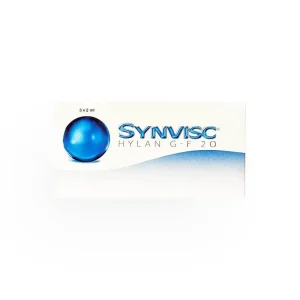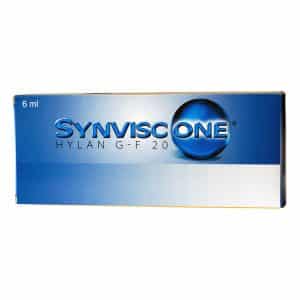A study published in Arthritis Research & Therapy found that the global prevalence of hip osteoarthritis (HOA) is approximately 8.55%, with the condition becoming more common as individuals age. This highlights the significant impact of HOA on mobility and quality of life.
Synvisc, a viscosupplementation agent, offers a promising solution for managing HOA. By mimicking the natural fluid found in joints, Synvisc provides lubrication and shock absorption, helping to reduce pain and improve joint function. This transition from understanding the prevalence of HOA to exploring treatment options underscores the importance of effective management strategies.
In this article, we will explore the benefits of Synvisc injections for hip osteoarthritis, how they work, and how they compare to other treatment options. Stay tuned to learn more about this innovative therapy.
Key Takeaways
- Synvisc injections are a type of viscosupplement used to treat knee osteoarthritis. However, some doctors may also use Synvisc off-label to treat hip osteoarthritis by providing additional lubrication to the hip joint, thereby reducing pain and improving mobility.
- The main Synvisc ingredients include hylan polymers derived from chicken combs, which mimic natural synovial fluid to cushion and protect the joint.
- Clinical studies on Synvisc for hip osteoarthritis have shown mixed results, with some patients experiencing significant pain relief while others see little improvement.
- Synvisc dosage typically involves multiple injections for optimal relief. The effects can last up to six months, providing longer-term benefits compared to corticosteroid injections.
- Common Synvisc side effects include mild pain, swelling, and redness at the injection site, with more serious complications, such as allergic reactions and joint infections, occurring rarely.
About: Medical Spa RX provides medical practices with premium products at the best prices. If you’re looking to buy Synvisc online for your practice, the sales representatives at Medical Spa RX can give you guidance.
Understanding Hip Osteoarthritis and Treatment Options
Hip osteoarthritis (HOA) is a degenerative joint condition in which the cartilage in the hip joint gradually breaks down, leading to increased friction between the bones. This causes pain and stiffness and can make movements like walking or sitting for long periods difficult. HOA often develops with age and is influenced by genetics, joint injuries, or excessive joint stress.
There are several treatment options for managing the symptoms of hip osteoarthritis. These include:
- Medications: Pain relievers like acetaminophen and nonsteroidal anti-inflammatory drugs (NSAIDs) can help manage pain.
- Physical Therapy: Strengthening exercises and mobility training can improve joint function and reduce discomfort.
- Injections: Treatments like hyaluronic acid injections (e.g., Synvisc vs Orthovisc) provide joint lubrication, but studies suggest that results may vary, with some patients experiencing little benefit compared to placebo injections. Stem cell injections are also being explored for their potential to repair damaged cartilage and reduce inflammation, although more research is needed to confirm their effectiveness.
How Synvisc Injections Work for Hip Osteoarthritis
Synvisc injections function as a viscosupplement, meaning they supplement the natural joint fluid, called synovial fluid, to improve joint lubrication and shock absorption.
The main ingredient, hyaluronic acid, is a natural component of synovial fluid that helps maintain smooth joint movement. In people with hip osteoarthritis, the natural synovial fluid becomes thinner and less effective, leading to increased friction, pain, and stiffness. By injecting Synvisc, the joint is provided with extra cushioning and lubrication, which helps reduce pain and enhance mobility.
How Synvisc Injections Specifically Target Hip Osteoarthritis
To ensure the effectiveness of Synvisc injections, doctors often use ultrasound-guided techniques to deliver the treatment directly into the hip joint. This precise approach ensures that the hyaluronic acid reaches the area where it is most needed, maximizing the benefits of lubrication and reducing inflammation.
For patients suffering from severe hip osteoarthritis, even those considering hip replacement surgery, Synvisc can provide temporary relief by decreasing pain and improving joint function. This can delay the need for surgery and improve quality of life by enabling better movement and reduced discomfort during daily activities.
Comparison With Other Treatment Options For Hip Osteoarthritis
| Treatment Option | Mechanism | Efficacy | Side Effects |
| Synvisc Injections | Improves joint lubrication and cushioning | Provides longer-lasting pain relief compared to corticosteroids | Injection site pain and swelling |
| Corticosteroid Injections | Reduces inflammation and pain by suppressing the immune response | Quick pain relief, effects last a few weeks to a few months | Joint infection, weakening of tendons, cartilage damage with repeated use |
| Non-Steroidal Anti-Inflammatory Drugs (NSAIDs) | Reduces inflammation and pain by inhibiting enzymes involved in inflammation | Effective for mild to moderate pain relief, not suitable for long-term use | Stomach ulcers, gastrointestinal bleeding, increased risk of heart attack/stroke |
| Physical Therapy | Exercises and manual therapy to improve joint function, strength, and mobility | Significantly improves symptoms, delays need for surgery | Generally safe, requires consistent effort and time commitment |
| Total Hip Replacement Surgery | Surgical replacement of the damaged hip joint with a prosthetic implant | Highly effective for severe cases, provides long-term pain relief and function | Infection, blood clots, prosthesis-related complications |
Efficacy of Synvisc Injections for Hip Osteoarthritis
Synvisc injections are primarily used for knee osteoarthritis but have been explored off-label for hip osteoarthritis. Clinical studies on Synvisc for hip osteoarthritis have shown mixed results. Some studies suggest that multiple injections may provide symptomatic relief by improving joint lubrication and reducing inflammation.
Patient experiences with Synvisc injections for hip osteoarthritis vary. Some patients report significant pain relief and improved mobility, attributing these benefits to the enhanced cushioning and lubrication provided by the injections. Others, however, have not experienced substantial improvements, highlighting the variability in individual responses to the treatment.
Common Synvisc side effects include pain, swelling, and redness at the injection site. More serious side effects, though rare, can include allergic reactions, joint infections, and increased joint pain. Following the recommended Synvisc dosage and administration guidelines is crucial to minimize risks.
Synvisc ingredients, such as hylan polymers derived from chicken combs, sodium chloride, and water for injection, are generally well-tolerated but can cause adverse reactions in some individuals.
Conclusion
Synvisc injections offer a promising option for individuals suffering from hip pain due to osteoarthritis. By supplementing the natural joint fluid, Synvisc helps reduce pain and improve mobility, lasting up to six months. While other treatments, such as corticosteroid injections, can provide faster relief, their benefits are often shorter-lived.
For many patients, Synvisc is a worthwhile choice to explore. While it may not completely cure hip osteoarthritis, it can significantly enhance joint comfort, making daily activities more manageable and reducing pain in a non-surgical way. Consulting with a healthcare provider can help determine if Synvisc is the right solution for your specific needs.
FAQs
1. What exactly are Synvisc injections for hips?
Synvisc injections, used in hip joints, contain a gel-like substance called hyaluronate… It’s similar to a naturally occurring body fluid that lubricates the joints.
2. Do Synvisc injections really help with hip pain?
Yes, they do! Patients often report relief from hip pain after these injections… However, individual results can vary.
3. Are there any risks or side effects of getting Synvisc injections for my hips?
Like all medical procedures, some risks exist… Common side effects include mild pain at the injection site and swelling… More serious complications are rare but could include infection or allergic reactions.
4. How long does it take for Synvisc injections to work on my hips?
Typically, patients notice improvement within a few weeks of their first injection… But remember—everyone’s body responds differently!
References
Fan, Z., Yan, L., Liu, H., et al. (2023). The prevalence of hip osteoarthritis: A systematic review and meta-analysis. Arthritis Research & Therapy, 25, 51. https://doi.org/10.1186/s13075-023-03033-7
Brander, V., et al. (2019). Evaluating the use of intra-articular injections as a treatment for painful hip osteoarthritis: A randomized, double-blind, multicenter, parallel-group study comparing a single 6-mL injection of hylan G-F 20 with saline. Osteoarthritis and Cartilage, 27(1), 59-70.





















